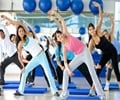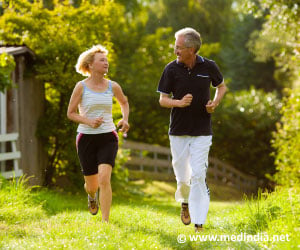For aging adults, high-intensity training is the best option, because it confers health benefits at both metabolic and molecular levels.
Highlights
- All types of training including high-intensity aerobic interval training (HIIT), resistance training (RT) and combined training (CT) help improve heart health, insulin sensitivity and body mass.
- But HIIT reverses the process of aging in older adults by synthesizing new proteins, which is mainly responsible for enhanced mitochondrial function in skeletal muscles.
- In order to achieve significant muscle strength, adding resistance training at regular intervals is important.
Resistance training (RT) reverses loss skeletal muscle mass and strength and enhanced synthesis rates of muscle proteins.
Combined training (CT) offers combined many benefits of both aerobic and resistance training.
All types of training helped to improve cardio-respiratory health, muscle mass and insulin sensitivity.
The aim of the study was to develop exercise recommendations for individuals at various age groups.
The data was gathered 72 hours after individuals in randomized groups completed each type of exercise.
In older adults, high-intensity intervals training helped to improve skeletal muscle protein expression with maximum effect that:
- increased energy
- helped in muscle enlargement
This contributes to protein synthesis which is responsible for improving mitochondrial function. But to achieve significant muscle strength, adding resistance training a couple of days a week is important
"We encourage everyone to exercise regularly, but the take-home message for aging adults that supervised high-intensity training is probably best, because, both metabolically and at the molecular level, it confers the most benefits," says K. Sreekumaran Nair, M.D., Ph.D., a Mayo Clinic endocrinologist and senior researcher on the study.
The findings appear in Cell Metabolism.
Reference
- Sreekumaran Nair et al. Enhanced Protein Translation Underlies Improved Metabolic and Physical Adaptations to Different Exercise Training Modes in Young and Old Humans. Cell Metabolism; (2017) doi.org/10.1016/j.cmet.2017.02.009
Source-Medindia
















